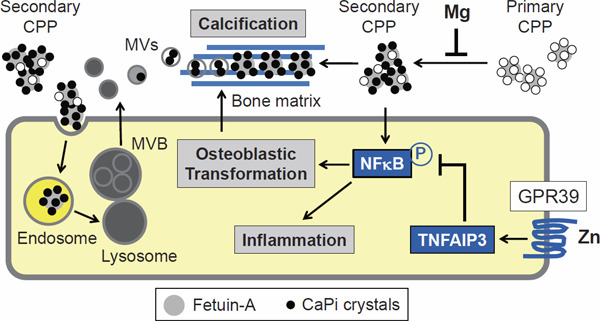Fig. 5.

A hypothesis on the mechanism of vascular calcification
Secondary CPPs have the activity that induces phosphorylation (P) of NFκB in vascular smooth muscle cells (VSMCs), followed by osteoblastic transformation and inflammatory responses. It is assumed that secondary CPPs are endocytosed and transferred to lysosomes in which calcium–phosphate may be dissolved under the acidic environment. These lysosomes may fuse with multivesicular bodies (MVBs) and provide calcium, phosphate, and fetuin-A to vesicles within MVB, which are secreted as matrix vesicles (MVs). Calcium–phosphate crystals grow in the MVs and accumulate on the bone matrix (blue lines) secreted from the transformed VSMCs. Zinc (Zn) inhibits vascular calcification through binding to its cell surface receptor GPR39 and inducing expression of TNFα-induced protein 3 (TNFAIP3), a potent inhibitor of NFκB activation. Magnesium (Mg) inhibits vascular calcification possibly through suppressing the transition of primary CPPs to secondary CPPs.
